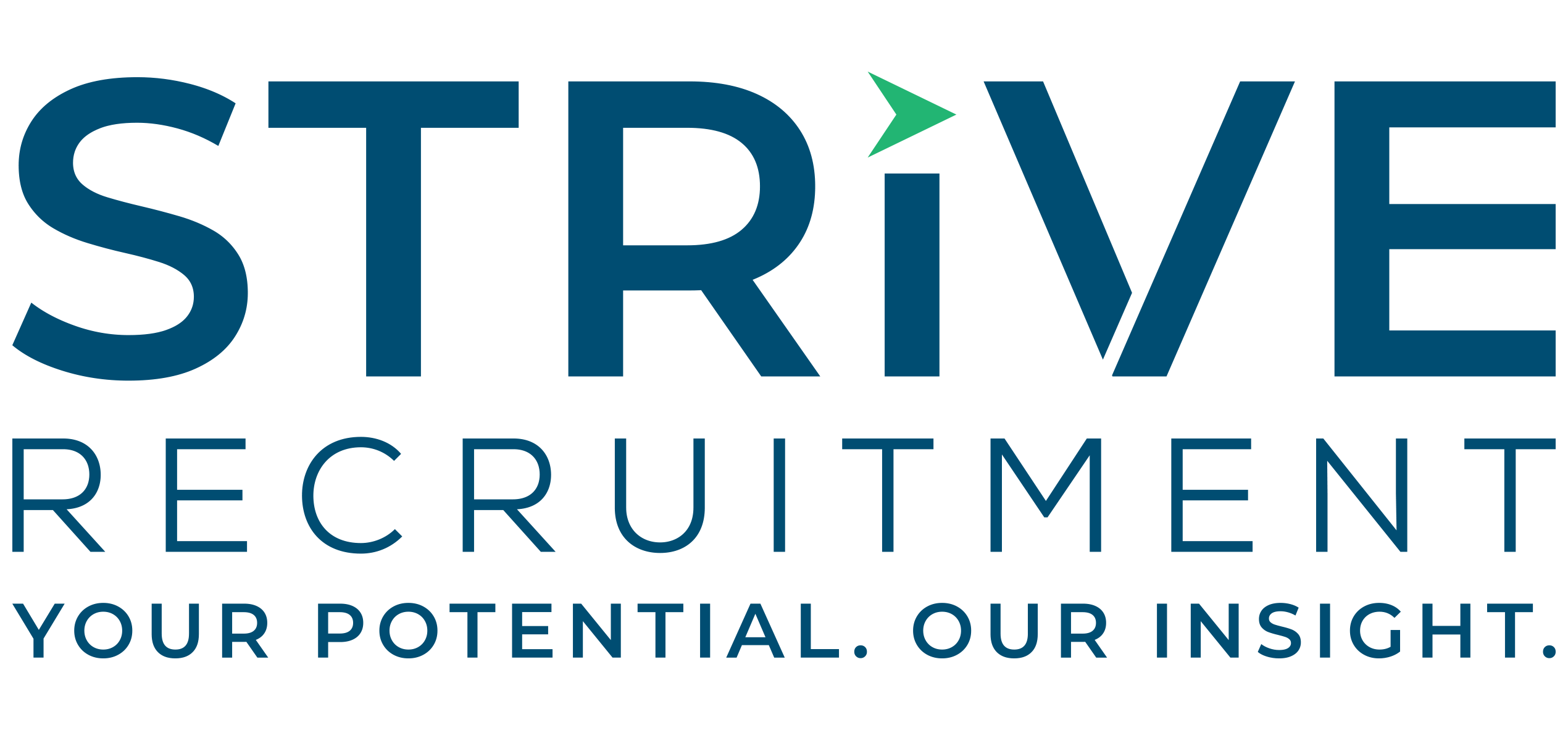2024 Interview Guide for Hiring Managers: Assessing and Securing Top Talent
As a Hiring Manager, your primary responsibility is to find top-quality candidates for open positions within your department or company. The success of your organization heavily relies on hiring the best individuals possible. To achieve this, the best Hiring Managers often employ various techniques that provide a comprehensive understanding of a candidate’s experience, professional background, and personality.
The aim is to gather as much information as possible to make informed hiring decisions and avoid bad hires. After all, you don’t want to end up hiring a “professional procrastinator” who spends more time on social media than actually working. Therefore, it’s essential to have a solid and effective hiring process that lands you the individuals required.
Consider this guide your starting point. We’ve gathered our most effective strategies and solutions to effectively assess and secure top talent in today’s competitive hiring market.
1. Writing an Effective Job Description
Start with the basics – did you consider that much of your target audience might not be applying for your role? Why?
Simply put, the description reads like a list of requirements rather than an enticing opportunity that would excite potential candidates. Yes, it’s important to address the essential qualifications for the position, but also crucial not to overlook the details that candidates want to know and that can truly excite them to apply.
If your job posting fails to deliver the right information and does not engage them sufficiently, candidates will, unfortunately, hit the “Back” button instead of applying.
Key points to consider when crafting a job posting:
- Showcase the Impact: Emphasize how the position plays a vital role in achieving the organization’s goals.
- Company Culture and Values: Illustrate a positive and inclusive work environment that fosters growth and teamwork.
- Career Growth Opportunities: Mention training programs, mentorship opportunities, and potential growth within the company.
- Benefits and Perks: Unique benefits or perks can include flexible working hours, remote work options, health and wellness programs, childcare facilities, or even social events.
- Challenging Projects: Include stimulating and innovative projects they will have the chance to work on. Ultimately, a well-crafted job posting should strike a balance between presenting the requirements of the position and communicating the exciting opportunities and benefits it offers.
- Expert Advice: Include 3 – 10 competencies (mix of technical (skill-based), and softer behavioural skills) as they provide a clear outline of what an employer expects from a candidate to excel in the position. Every competency consists of five levels to illustrate the proficiency needed when they’re applied to a specific job.
- Examples: Analytical ability, problem-solving, negotiation, strategic planning, and data-based decisions.
- One step further: Align each responsibility with one of your core competencies so there is a clear connection between the skills required and the duties they will be performing.
2. Identify Top Talent in Your Industry
Traditional hiring practices have often focused solely on technical competencies, educational background, and professional experience. While these factors are important, they merely provide a glimpse into a candidate’s potential. To build a team that can adapt, innovate, and drive the company forward, you should assess an individual’s versatility and potential and go beyond just the surface.
Embracing a more holistic approach to hiring can lead to assembling teams that are not only qualified but also empowered to tackle challenges, adapt to change, and foster a culture of innovation within the organization.
An effective leader recognizes the importance of embracing differences in people. They understand the value that comes from the unique perspectives, backgrounds, and skills that each individual brings to the table. Rather than viewing these differences as potential obstacles, they recognize them as opportunities to create a blend of diverse perspectives, skills, and ideas.
Qualities and responses to look for:
- Thinking Outside the Box: A candidate who can think outside the box possesses a unique ability to approach challenges from unconventional angles. This creativity often results in innovative solutions.
- Initiative: The ability to take initiative is a hallmark of a proactive candidate. The initiative goes beyond fulfilling assigned tasks—it involves recognizing opportunities for improvement and taking proactive steps to make them a reality.
- Fresh Perspectives: In a world where diverse perspectives drive innovation, the value of a candidate’s fresh outlook cannot be overstated. Individuals who can bring a unique viewpoint to the team enrich discussions, challenge assumptions, and ultimately lead to well-rounded decision-making.
- Effective Communication: Strong communication skills are a fundamental trait of a well-rounded candidate. Whether it’s presenting ideas persuasively, listening actively to colleagues, or resolving conflicts diplomatically, effective communicators facilitate smooth collaboration and understanding among team members.
- Company Engagement: Candidates who show genuine interest in the organization and its challenges stand out as individuals committed to their potential role. Their efforts to research the company’s history, values, and current endeavours reflect dedication and enthusiasm beyond the job description.
Questions you can ask:
- How do you measure your success?
- How do you handle setbacks or failures?
- Describe your short-term/long-term career goals.
- How did your last job fit or not fit into your career goals?
- Example of when you provided a solution that your manager thought was creative and potentially something not known to the employer previously.
Relying solely on past performance and experience as a measure of potential can be limiting because it fails to account for an individual’s ability to excel in new or unfamiliar situations. It is crucial to recognize that some individuals may not have had equitable access to essential resources like mentoring, sponsorship, development, and advancement opportunities.
These factors can greatly impact their ability to showcase their potential and contribute significantly to an organization. By broadening your perspective and considering diverse sources of talent, you can create a more inclusive and robust leadership pipeline.
3. Consider Long-Term Potential
It’s imperative to utilize interviews to evaluate their long-term potential within the organization. Look for individuals who can grow and adapt as the company evolves. A question that should be avoided is, “If you got the job, how long do you plan on working here?” While the desire to gauge a candidate’s commitment to the organization is natural, posing this question directly can be counterproductive.
As the dynamics of the modern workplace continue to evolve, there is a growing acknowledgment that tenure alone might not be the best indicator of a candidate’s potential to contribute meaningfully to an organization in the long term. Instead, interviews should focus on evaluating a candidate’s potential to make substantial, lasting contributions to the company’s goals, culture, and growth.
Here are a few questions you can ask:
- “How does this position fit into your career plan?”
- “Tell me about yourself and how you ended up pursuing this field?”
- “Where do you see yourself in the next 3 years?”
- “How do you like to receive feedback?”
- “What about the organization or the job description resonates with you the most?”
Some Green Flags to look out for:
- Their passion mirrors those of the organization
- Look for individuals who have successfully navigated changes in their previous roles and industries.
- They show an achievement pattern that includes promotions, awards, and perhaps repeatedly outstanding performance reviews.
Some Red Flags to look out for:
- It’s all about the money!
- They left multiple previous employers due to conflicts with their managers, coworkers, or other issues arising from challenges from working with others or taking direction effectively.
- They aren’t interested in the company’s long-term plans or mentorship/growth chances.
- When talking about their future career, they mention things that don’t match their current role.
While it’s natural to want to ensure long-term commitments from candidates, the focus should be on identifying individuals who can contribute to the company’s growth and evolution. By asking thoughtful questions that explore candidates’ skills, potential, and alignment with the company’s values, you’ll be better equipped to make hiring decisions that benefit both your startup and the candidates themselves.
4. Cultural Fit Assessment
While it’s important to note that the candidate is qualified for the position, it’s also important to spend some time talking about their values. A candidate’s ability to perform tasks is only one aspect of their contribution to a company; their ability to collaborate seamlessly, communicate effectively, and uphold the company’s core principles is equally important.
To effectively assess cultural fit, it is essential to engage candidates in conversations that explore their alignment with the company’s culture. These conversations may touch on various aspects, such as their understanding of the company’s mission and values, their preferred working style, and their approach to collaboration and conflict resolution.
One valuable tool in this assessment process is the use of psychometric assessments like the ‘Occupational Personality Questionnaire’ (OPQ). These assessments delve into an individual’s personality traits, communication styles, and behaviour in various professional scenarios. By examining a candidate’s psychological profile, these tools provide a more comprehensive view of their potential contributions and compatibility with the company culture.
Some green flags to look out for:
- Willingness to collaborate, communicate openly, and constructively find resolutions.
- The candidate’s working style aligns with the organization’s expectations and demonstrates good time management and accountability.
- Highlights their adaptability, openness to change, and ability to navigate uncertainty.
Some red flags to look out for:
- A candidate who consistently expresses negativity about their previous workplace or colleagues.
- The Candidate’s values fundamentally clash with the organization’s core values.
- A candidate who emphasizes individual achievements over teamwork.
- Inability or resistance to adapt to new situations.
Questions to ask:
- Can you describe a work environment or company culture where you have thrived in the past?
- Tell us about an experience when you went above and beyond to help a team member.
- How do you handle conflicts or disagreements with colleagues in your past role?
- Share an experience when you adapted to changes in your role or projects.
Cultural fit assessment does not imply a one-size-fits-all approach. Each company possesses its own unique culture, and what constitutes a suitable fit may vary significantly from one organization to another. Therefore, organizations must explicitly define their culture and values, allowing them to accurately evaluate candidates against these criteria.
5. Creating a Positive Candidate Interview Experience
- Clear and timely communication: Keep candidates informed at every stage of the process. Provide updates on the status of their application, interview dates, and any changes in the process. Promptly respond to their emails or inquiries, demonstrating respect for their time and interest in the position.
- Personalized approach: Recognize that each candidate is unique and tailor your interactions accordingly. Address them by their name, show genuine interest in their background, and highlight specific aspects of their skills and experience that align with the role.
- Prepare candidates for the interview: Help candidates feel more at ease by providing them with detailed information about the interview. Provide candidates with information about what to expect during the interview, including the format, whether it’s an in-person, video, or phone interview, and the duration. Inform them of the interview duration and any specific requirements, such as technical assessments or presentations, allowing them to adequately prepare. These Interview preparations can be created once and used as a template for all candidates. This can be easily administered by someone on your team before each interview.
- Professional and welcoming environment: Ensure that the interview setting is professional, well-organized, and free from distractions. Greet candidates warmly, introduce them to the interviewers and create an environment where they feel comfortable showcasing their abilities.
- Provide insights into company culture and values: Use the interview as an opportunity to share insights into your company’s culture, values, and mission. Candidates are not just evaluating the job; they are also considering if they can see themselves being a part of your organization’s culture.
- Allow candidates to ask questions: Encourage candidates to ask questions throughout the interview process. This demonstrates your openness to their concerns and shows that you value their input.
- Respectful and timely feedback: After each stage of the interview process, provide candidates with constructive feedback, whether they progress to the next round or not. Timely feedback shows respect for the candidate’s time and effort invested in the process.
Remember that a positive candidate experience not only creates a lasting impression but also plays a crucial role in attracting top talent, enhancing your employer brand, and increasing the chances of securing the best-fit candidates. Treating candidates with respect and care throughout the hiring process will reflect positively on your company and help you build a strong and diverse team.
STRIVE is a specialist recruitment firm offering proactive recruitment solutions in the areas of Accounting & Finance, Corporate Administration, and Manufacturing Operations. STRIVE supports various clients from small to medium-sized enterprises to Fortune 500 organizations for their permanent, contract, and temporary recruitment needs. Our team of experienced recruiters uses a range of sourcing methods to identify and attract high-quality candidates who meet your specific requirements. We manage the entire recruitment process from start to finish, including candidate screening, interviewing, reference checks, and offer negotiations.
We have access to one of the world’s best AI-powered Talent Intelligence platforms and have a deep understanding of the local market and its intricacies, allowing us to identify the most suitable candidates for your specific requirements. Our mission is to uncover talent that will fit the role, the team, and the future vision of the organization.


